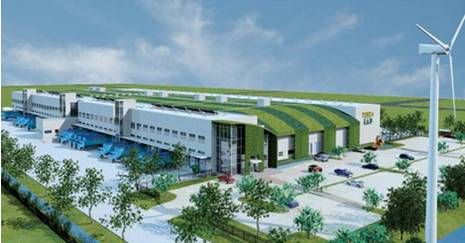Companies can make a significant contribution to lowering global greenhouse gas emissions. For many companies, this involves shifting their supply chains to include more electric vehicles and greener fuels for carrying goods and commodities. But why should we stop there?
Even more, opportunities to become green exist in the buildings where these companies store or manufacture their products. According to the World Green Business Council, the building sector has the greatest potential to reduce greenhouse gas emissions.
This is where the role of sustainable warehouse steps in. Energy-saving devices and building materials are used in a green and sustainable warehouse. Moreover, warehouses can be designed using sustainable principles, whether new construction or retrofitting, and it’s not an all-or-nothing proposition.
Six Major Elements of a Sustainable Warehouse

Here are some of the elements that operations managers should look for in a sustainable warehouse and how changing to a green building can save money.
- Lighting is the principal driver of a facility’s electrical load. LED lighting is the most cost-effective and long-term update for existing structures. Changing the lighting in a warehouse to LED can reduce the total energy consumption of the building while also reducing heat generation. Furthermore, because LED bulbs last much longer than all other types of lighting, warehouse lighting is replaced far less frequently, possibly saving a lot of money. Daylighting tubes, also known as solar tubes, are polished sheet metal cylinders that reflect and channel outside light into the inside while keeping its intensity. Each tube functions as a light source, reducing or eliminating the requirement of artificial light during the day.
- One of the elements of a sustainable warehouse is adding a cool roof to a warehouse is one approach to reduce the warmth inside. This can be done with white paint or light-coloured reflective materials. Rather than absorbing the sunshine, this bounces it back. It also aids the community in combating the urban heat island effect, which occurs when a portion Rooftop solar panels are also an option. Solar power panels can be installed by third parties, saving the tenant or warehouse owner money by providing less expensive energy to use in the building.
- Insulation can help save money on energy while also improving worker comfort. Low-polluting materials, such as speciality paints, adhesives, wood products, sealants, and carpeting, can improve the air quality while requiring fewer chemicals in their manufacture.
- The warehouse location is crucial for long-term viability. According to the US Green Building Council, buildings consume 41% of energy in the US, while transportation consumes 29%. (USGBC). Tenants prefer their distribution facilities to be in urban areas so that transit into and out of the building is as simple as possible. They desire convenient access to motorways, ports, highways, and airports. When distribution facilities are located in urban areas, trucks may travel shorter distances between transportation hubs such as airports or rail yards, and employees can use public transportation to get to work more simply. The streets, water pipelines, and utility lines are already in place. Building in a central area reduces the need for additional infrastructure. Location is also one of the major elements of a sustainable warehouse .
- Even if not all warehouses win aesthetic and design awards, they can nonetheless be attractively maintained with water-saving landscaping. Rainwater harvesting, water-saving plumbing fittings, and water-monitoring sensors are examples of other water features. According to the USGBC, buildings use around 14% of potable water in the United States, but by implementing water-saving measures, that usage can be reduced by 15% and expenditures reduced by 10%. Stormwater drainage systems can be installed to redirect water away from municipal stormwater systems and into natural prairies, holding ponds, and other options on-site.
- In large warehouses, open buildings, cooling and heating systems can be inefficient. Thankfully, these systems aren’t required in all climates or seasons. High volume low speed (HVLS) fans effectively move cool or warm air about a warehouse, keeping workers comfortable and reducing energy use. Even in climates where air conditioning or heating is required, they can be beneficial. Building owners who want to improve the sustainability of their existing structures can do a thermographic inspection, which uses non-intrusive infrared imaging technology to detect uncontrolled heat input or loss.
Conclusion
Customers are looking for buildings with a high likelihood of operational efficiency to lower their running costs, and a sustainable warehouse is a way to build green buildings. Buildings consume 41% of all energy in the US. (Compare this to the transportation industry’s 29 percent.) Furthermore, many warehouses are automating, which adds to the energy demand, which is why energy efficiency is crucial.

